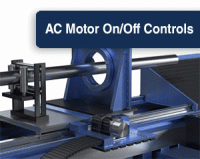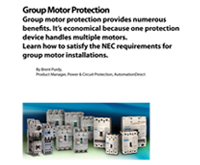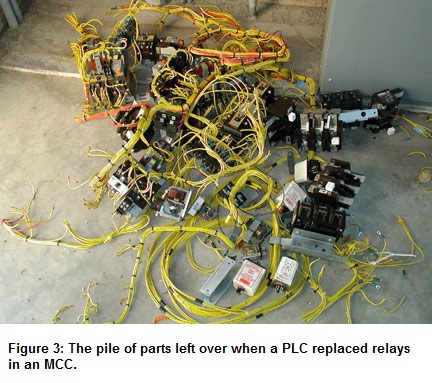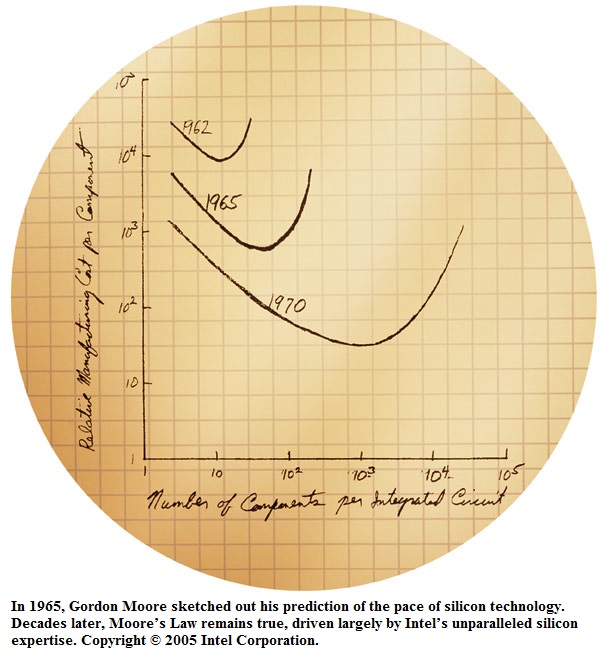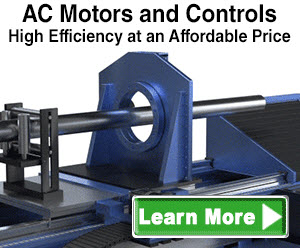Most control systems have to make things move, and that usually involves motors. Lifting, pumping, robotics, conveyors, fans – pretty much everything uses a motor of some kind. General purpose one- or three-phase AC motors are great for simple on/off systems; Inverter-duty motors are specifically designed for operation with variable frequency drives or VFDs. General…
There are four basic motor control options available: Basic contactors, traditional starters, manual motor starters, or combination starters. A basic contactor is a special purpose relay that is used to control large electrical currents. Similarly, a traditional starter utilizes overload relays, auxiliary and alarm contacts, and mechanical interlocks to create a reversing unit. On the other…
Our Group Motor Protection White Paper explains how the usual way of preventing a small motor from drawing too much current is to install overcurrent protection in the form of a circuit breaker or some other kind of limiter. But installations that employ more than one motor might not want to use this approach. What’s Inside? By using…
ApplicationApplication StoriesAutomation NotebookFeature StoryIssue 20 – 2011Learning ResourcesMotor ControlsNotebook IssuePLCProcess ControlProductProgrammable Control
Upgrading Pump Stations with PLCs
When relays and timer circuits get old, they cause problems. Replacing them with PLCs keeps pumps running smoothly. One of the most important jobs of a water distribution system is to reliably deliver water to its customers. At our water district in California, we had pumping stations (Figure 1) with relay-based controls that were more…
Automation NotebookIssue 9 – 2007Learning ResourcesMotor ControlsNotebook IssueProductTechnology Brief
Semiconductor Breakthroughs Promise Smaller, Faster Chips
Computer chips are always getting smaller and faster – right? Historically, this has been the trend. This trend was first observed by Intel co-founder Gordon Moore in 1965, and the term “Moore’s Law” was coined several years later. For over forty years this “law” has held, chips have gotten more complex, and transistors have shrunk…
A motor starter is a combination of devices used to start, run, and stop an AC induction motor based on commands from an operator or a controller. In North America, an induction motor will typically operate at 230V or 460V, 3-phase, 60 Hz and has a control voltage of 115 VAC or 24 VDC. Several…


